Interactive Report Summary
Q2 2024 Cyber Threat Report
Top Findings at a Glance

Industry Spotlight: Manufacturing
The manufacturing industry remains a prime target for cybercriminals, particularly when it comes to ransomware attacks. According to Nuspire’s threat research, manufacturing has been the No. 1 targeted industry for ransomware for the past 6 months. The integration of IT and OT systems in manufacturing environments creates a continually growing attack surface. This factor, coupled with the use of legacy systems, insecure protocols and the industry’s critical role in supply chains, makes these environments particularly vulnerable, and thus attractive to threat actors.
Methodology
How Nuspire produces its threat intelligence
Hover over tiles to learn more
April THROUGH June
Q2 2024 in Review
Q2 2024 was marked by notable developments in the cybersecurity landscape, reflecting an ongoing battle between cybercriminals and defenders. This quarter saw a series of critical vulnerability patches from major tech companies, including Ivanti, Microsoft and Palo Alto, addressing issues that allowed remote code execution and denial-of-service attacks. State-sponsored threat actors exploited zero-day vulnerabilities in Cisco systems to breach government networks, while Okta reported an unprecedented surge in credential-stuffing attacks. Law enforcement actions against ransomware groups, particularly LockBit, led to a notable decline in activity.

Total Events
Publications Averaged Per Week
Decrease in Publications
Ransomware
Detection, Q2 2024There was a decrease of 10.43% in ransomware publications compared to Q1 2024.
How to Combat
To fortify defenses against ransomware, organizations should implement robust endpoint detection and response (EDR) systems, conduct regular data backups and enhance cybersecurity awareness among employees. These measures are crucial for preempting attacks and mitigating their impact.
Ransomware
In Q2, ransomware activities declined, with a 10.43% decrease in ransomware publications from Q1 2024. Law enforcement efforts considerably hampered LockBit’s operations, leading to a reduction in their activity. However, Play Ransomware activity increased slightly, demonstrating these threats’ persistence and adaptability.

Total Marketplace Listings
Listings of Credit Cards for Sale
Decrease in Total Listings
Dark Web
Detection, Q2 2024Nuspire saw a –12.93% decrease in dark web marketplace listings in Q2.
How to Combat
To combat dark web threats effectively, it is essential to implement comprehensive cybersecurity measures, such as advanced threat detection systems and stringent data protection protocols. A dark web monitoring service can enhance these efforts by continuously surveilling dark web marketplaces. Regular monitoring is crucial for early detection of potential threats and swift response to protect sensitive data.
Dark Web
Despite the overall decrease in dark web marketplace listings by 12.93%, there was a notable increase in listings for Social Security Numbers (SSNs) and account access, indicating a growing threat of identity theft and financial fraud. This rise underscores the need for robust personal data protection and continuous monitoring to safeguard against these heightened risks.

Total Events
Unique Exploits Detected
Increase in Total Activity
Exploits
Detection, Q2 2024In Q2, exploit activity surged by 21.07%.
How to Combat
Preventing exploits involves rigorous system patching, using firewalls with intrusion prevention systems, and staying informed through security news and vendor bulletins. Proactive security measures are vital to thwart attackers and reduce the risk of breaches.
Exploits
Exploitation events witnessed a jump of 21.07% in Q2, with notable activity targeting vulnerabilities in systems like Web Server File Access, Log4j, and Hikvision cameras. This increase underscores the critical need for timely patching and system updates to prevent exploitation.






